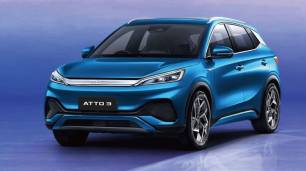The interior is downright practical and boasts more space than this SUV class can usually claim. At 168cm (5'6") I have plenty of head and legroom in both rows, even with the electric sunroof! Tall passengers will feel comfortable, too.
Up front, the leather-accented seats are well-padded and both are electric with heating function but the passenger side misses out on additional lumbar support.
Individual storage options are quite good with a deep middle console and glove box, plus two cupholders and a drink bottle holder in each door.
The phone utility tray is a tad too small for my iPhone 8 Plus, which makes it awkward when you connect to the wired Apple CarPlay or Android Auto.
The 8.0-inch touchscreen multimedia system is on the smaller side but the graphics are super clear. It’s not laggy either, which is always a bonus, and has built-in satellite navigation, too.
There is an additional 4.2-inch screen on top of the dash plus the 6.3-inch digital instrument panel – both display safety and vehicle information but I found it confusing jumping between all three screens while on the go.
Incorporating the smaller screen’s info into a larger instrument panel would have been better.
Charging options are good throughout with each row getting two USB-A ports but the front also enjoys two 12-volt ports too.
The back seat is almost as comfortable as the front and individual storage is better than average with a map pocket and two device holders on the backs of both front seats. There are those drink bottle holders and two cupholders in the fold-down armrest.
The amenities are a bit bare but I do like that you have directional air-vents and those USB ports.
My six-year old and my parents found it super easy to get in and out of this car because of the 220mm ground clearance.
The doors were a little heavy for my son to operate smoothly but I love how they open to almost 90 degrees because it made it easy to fit my monster booster seat through the aperture.
On that note, there are ISOFIX child-seat mounts on the outboard seats and three top-tether anchor points and I reckon you might get lucky with three skinny seats.
There should be plenty of room for front passengers when a 0-4 rearward facing child seat is installed, too.
I really like how wide and tall the aperture is for the boot but was surprised that it only has 498L of capacity because it looks a lot bigger.
It has a level loading space but because of the full-sized spare wheel, you can’t adjust the floor level. And as always, it’s great having a powered tailgate.








.png)















































.png)























 copy.png)















